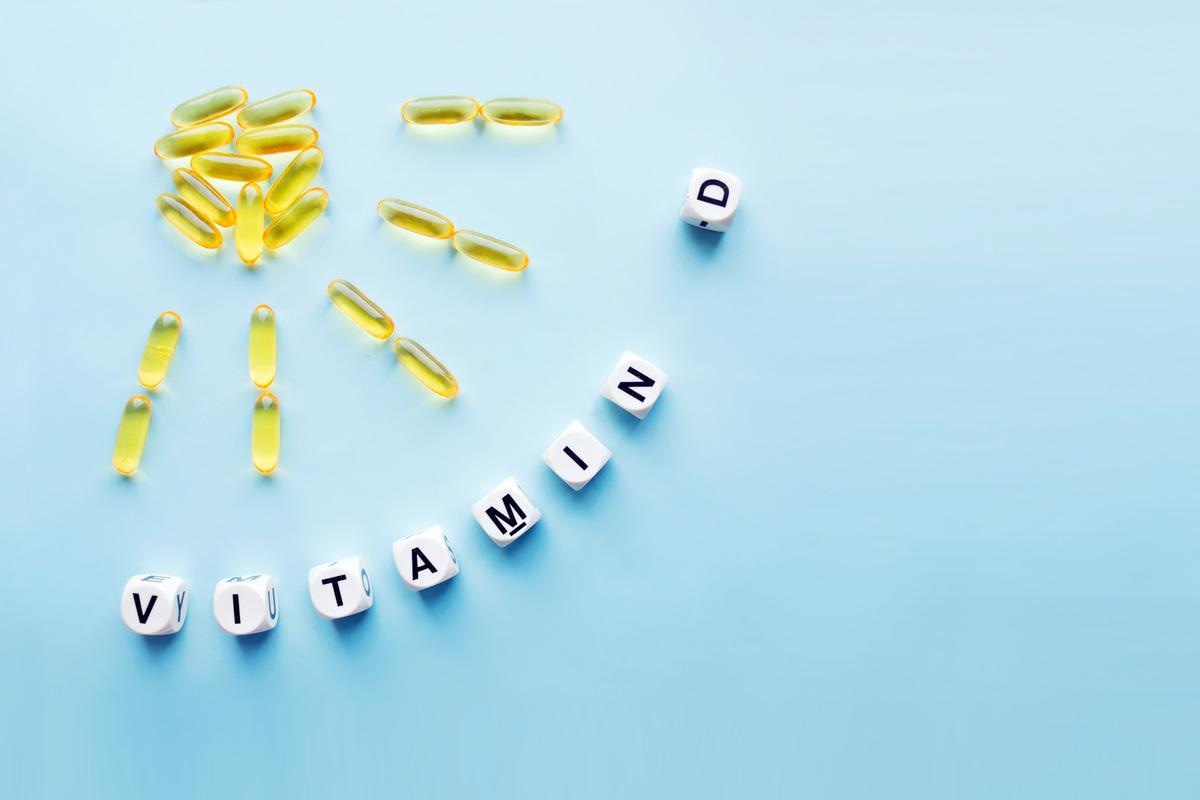In a recent study published in PLOS ONE, researchers explored the associations between vitamin D levels and severe acute respiratory syndrome coronavirus 2 (SARS-CoV-2) infections, hospitalizations, and deaths in England.
 Study: The association between vitamin D status and COVID-19 in England: A cohort study using UK Biobank. Image Credit: Iryna Imago/Shutterstock
Study: The association between vitamin D status and COVID-19 in England: A cohort study using UK Biobank. Image Credit: Iryna Imago/Shutterstock
Background
Coronavirus disease 2019 (COVID-19) vaccines have been effective; however, controlling the COVID-19 pandemic globally has continued to be a challenge. Understanding the etiology of COVID-19 is essential for developing efficient strategies for COVID-19 prevention.
Vitamin D is vital for bone health. It regulates calcium and phosphate levels and has been reported to be immunomodulatory in recent studies; however, the associations between vitamin D levels and SARS-CoV-2 infections and associated severity outcomes (hospitalizations and deaths) are unclear.
About the study
In the present study, researchers explored the potential protective effects of vitamin D against SARS-CoV-2 infections, hospitalizations, and deaths in England.
The study participants were a part of the United Kingdom (UK) biobank comprising 40 to 69 years old residents of England, enrolled from 2006 to 2010. For the analysis, individuals who had undergone several (>1) serological vitamin D tests and who had their electronic health records [primary care records, inpatient records, and death records (certificates)] linked were included and followed up till March 16, 2020. Primary care data were obtained from the test productivity pack (TPP) and education management information systems (EMIS) in England, and the inpatient care records and death certificates were obtained from the national health service (NHS) England.
The primary study exposure was serological 25-hydroxyvitamin D level measured at enrolment by chemiluminescence immunoassays and was described as deficiency, insufficiency, and sufficiency based on the vitamin D levels as <25 nmol/L, 25 to 49 nmol/L, and ≥50 nmol/L, respectively. Individuals tested between April and October and between November and March were assigned as ‘during summertime months’ and ‘during non-summer time months,’ respectively.
Secondary exposures comprised prescribed or self-reported vitamin D supplementations, and related data were obtained via self-reported questionnaires. All medications listed in British national formula section 9.6.4, including vitamin D and associated minerals such as calcium, fish oil, and multivitamins, were considered vitamin D supplementation.
The primary study outcome was clinically diagnosed or polymerase chain reaction (PCR)-confirmed COVID-19, and the secondary outcomes were hospitalizations and deaths due to SARS-CoV-2 infections. Clinically diagnosis of COVID-19 was based on the SNOMED-CT (systematized nomenclature of medicine -clinical terms), CTV3 (clinical terms version 3), and ICD-10 (international classification of diseases, tenth revision) codes. COVID-19-associated hospitalizations and deaths were recorded based on ICD-10 codes U071 and U072. Cox regression models with adjustments for demographical factors and comorbidities and stratifications for summertime and non-summer time months were used for the analysis.
Results
A total of 307,512 individuals were included in the analysis, of which the majority were female and aged >70 years. During the summer months, some evidence was found for the association between deficiency of vitamin D and risk of COVID-19 diagnosis [hazard ratio (HR) 0.9]. On the contrary, during the non-summer months, vitamin D deficiency was associated with a higher risk of SARS-CoV-2 infections than vitamin D sufficiency (HR = 1.1). However, there was no evidence of the associations between vitamin D deficiency or insufficiency and SARS-CoV-2 infection-associated hospitalizations and deaths in the summer and non-summer months.
A total of 10,165 study participants were diagnosed with COVID-19 in autumn (51%), winter (31%), and spring (14%), whereas only a few cases were diagnosed in summer (4%). Similar trends were observed for COVID-19-associated hospitalizations and deaths. After data adjustments, during or after the British summertime months, there was no evidence for associations between vitamin D insufficiency or deficiency and a higher risk of COVID-19-related hospitalization (in British summertime months: adjusted HRs for insufficiency and deficiency were 0.9 and 1.1, respectively, and during non-summer months, the corresponding adjusted HRs were 1.1 and 0.9, respectively).
Likewise, no evidence was found for an increased risk of SARS-CoV-2 infection-related deaths among individuals with vitamin D deficiency or insufficiency during or after British summertime months (during British summertime months: adjusted HRs for insufficiency and deficiency were 0.8 and 1.1, respectively; during non-summer months the corresponding adjusted HRs were 1.4 and 1.5, respectively).
After data adjustments, individuals with vitamin D deficiency had a 14% lower risk of SARS-CoV-2 infection diagnosis than those with vitamin D sufficiency during British summertime months (HR = 0.9). During non-summer months, the risk of COVID-19 was 14% higher among individuals with vitamin D deficiency (HR = 1.1).
Some evidence showed that during summertime months, participants with prescribed vitamin D supplementations had increased risks of COVID-19 (adjusted HR = 1.2), hospitalization (adjusted HR = 1.6), and mortality (adjusted HR = 2.3). During British summertime months, no evidence showed lower COVID-19 risks among individuals with self-reported vitamin D supplementations (adjusted HR = 0.9), and COVID-19 risks were higher during non-summer months (adjusted HR = 1.2).
Conclusion
Overall, the study findings showed inconsistent associations between the serological levels of vitamin D and diagnosis of COVID-19 and no associations between vitamin D levels and COVID-19-related hospitalizations and deaths. However, further research with recent vitamin D measurement data and systematic SARS-CoV-2 testing is required to investigate the probable role of vitamin D in the prevention of SARS-CoV-2 infections precisely.